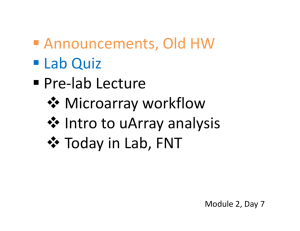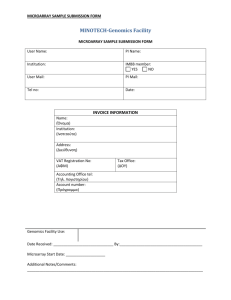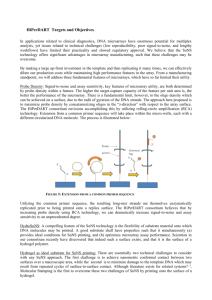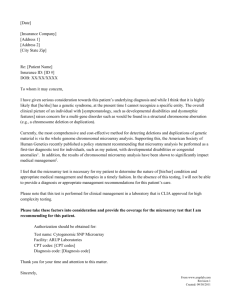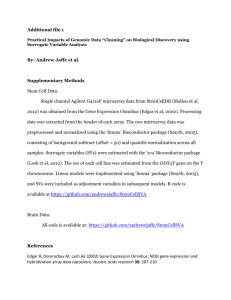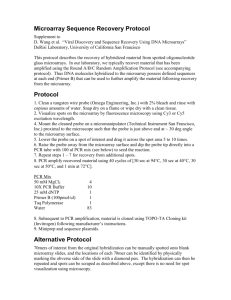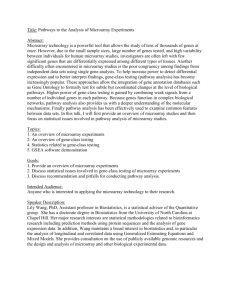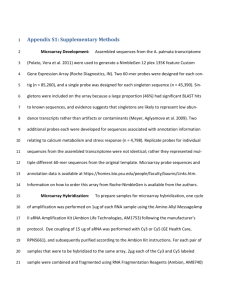Publishable Summary
advertisement
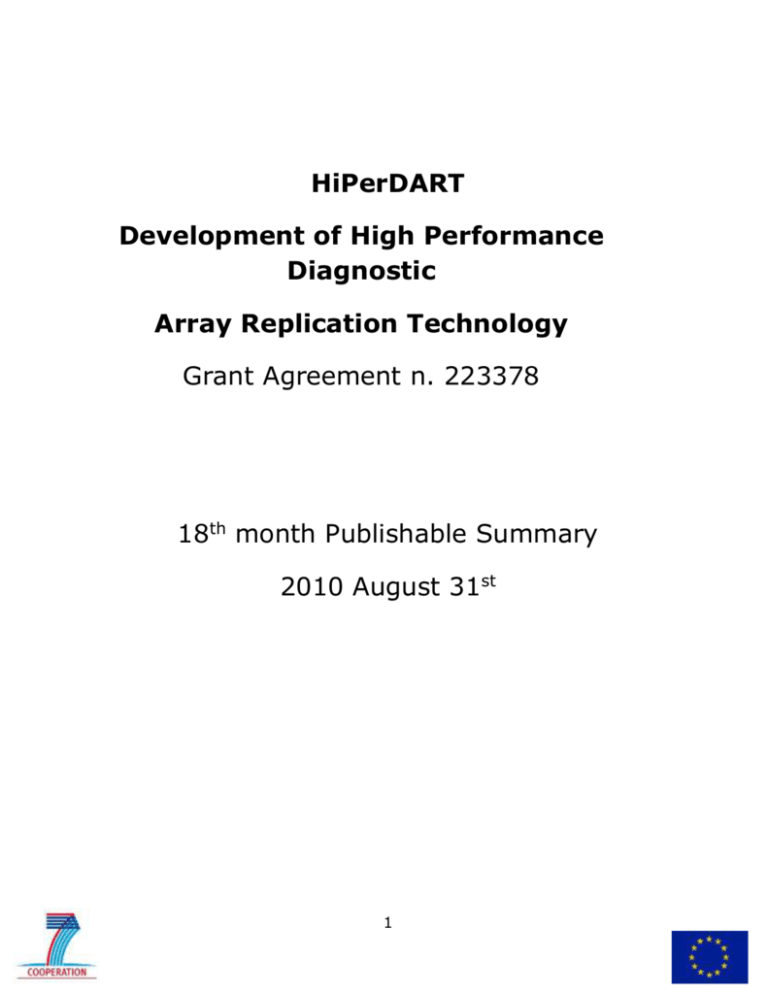
HiPerDART Development of High Performance Diagnostic Array Replication Technology Grant Agreement n. 223378 18th month Publishable Summary 2010 August 31st 1 1. Publishable Summary The aim of the HiPerDART project is to develop a higher standard clinical microarray technology platform, by proposing a highly innovative probe printing technology, called Supramolecular NanoStamping (SuNS). Since in HiPerDART both assay workflow will be minimized and signal-to-noise ratios will be improved, the technology platform promises to dramatically improve reliability, reproducibility and costs of these medical tests. In an industry dominated by U.S. players it is imperative to establish a strong European presence at this early stage in the development of the clinical market. We’ll use a complex disease as colon cancer to prove the strength of the HiPerDART microarray technology platform. The HiPerDART consortium is strongly convinced that including the SuNS technology into microarray production will overcome current issue such as production speed, flexibility, reproducibility, cost. The objectives of the project were stated in a ten times decrease of production time and costs, increasing the microarray feature uniformity. To address the requirements the assay sensitivity will be increased ten times, reducing assay workflow time by half, decreasing five-fold the hybridization time, improving twice the stability of classifier signature and improving the biomarker qualification for diagnosis, treatment outcome, prognosis and personalized medicine. Rolling Circle Amplification (RCA) is the technique which should address the high sensitivity requirements. A basic study of the RCA reaction in terms of characterization of the main blocks of RCA was ran to find out the ideal conditions to develop the polymerization on a solid surface. The development of a replica surface started by characterizing polymer brushes 3D architectures to be functionalized on the second part of the project. The development of an automated stamping machine for replication of template surfaces was started. The difficult task of finding the appropriate biomarkers for colon cancer was initiated. The coming microarray technology will allow early diagnosis required to decrease the death impact degree of this disease. 2 A variety of results has been achieved. Several important progresses have been made for the development of LHD (Linear High Density) arrays, the most critical being the characterization of the loop and amplicon species and the yield of the reactions involved in the overall process. The first prototype of LHD array allowed to define and characterize the usefulness of this format in comparison with the traditional platforms commercially available. The most evident advantage in using LHD array is the high sensitivity toward target detection, up to ten times more than the traditional 60nt probes. Moreover, this characteristic allowed to reduce by a factor of ten the amount of material needed for sample hybridization, overcoming one of the main issues associated with the microarray technology and allowing disease detection with very limited sample amount. A space confinement methodology was developed showing that a photo resists mask works very well for biomaterials confinement by producing desired morphology of the spots and higher uniformity of signal intensity of the array spotted inside the microwells. The bulk replica surface was characterized showing that an hyper-branched structure (polymer brushes) could dramatically enhance the above mentioned sensitivity requirements. On the other hand a variety of basic tests have been run to determine the variables involving the design of an hybridization cartridge on the final device. On the stamping level, the design and manufacturing of a fully automated stamping machine was done along with its installation. A significant number of slides has been run through the machine to assess its stability and to confirm process repeatability. As consequence of very positive results for all the characterization tests, the equipment was released for use. A detailed study on pressure and temperature profiles as well as parallelism tolerance has been done allowing us to set a preliminary set of QC procedures. A detailed study on predictors has been done leading to the individuation of ten predicting best probes. Validation was achieved performing a leave one out cross validation for a logistic regression model adjusted by gender, sex, study and stage. HiPerDART project results represent a potential positive impact in the economic and social aspects of the microarray diagnostic capability and performances. We do expect that the final configuration device will allow fast and reliable prediction for colon cancer dramatically increasing the diagnostic tools. 3


